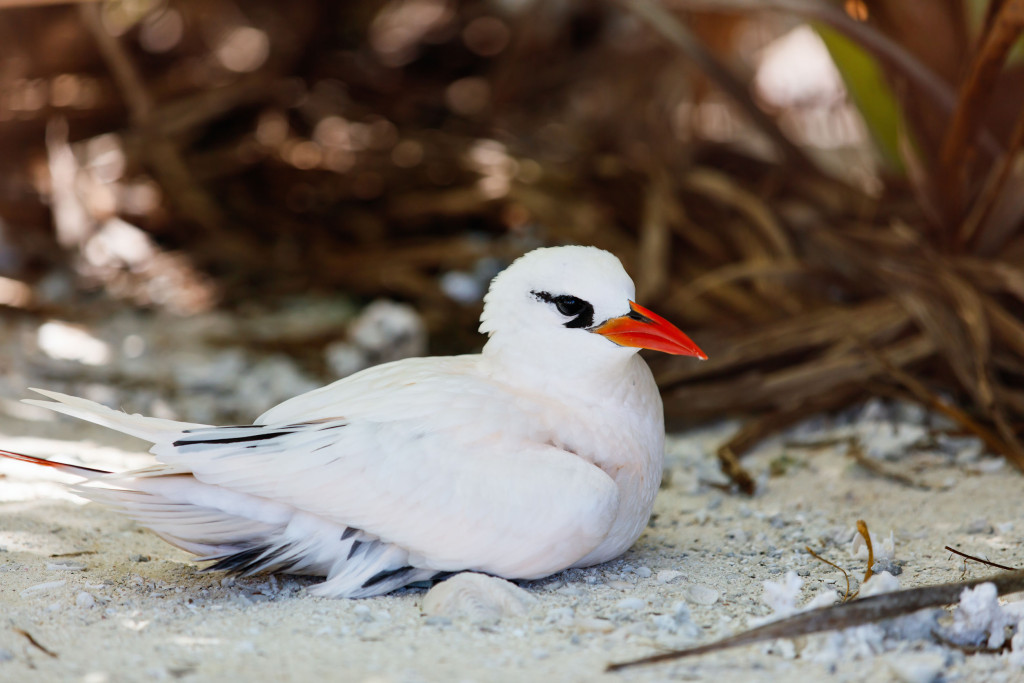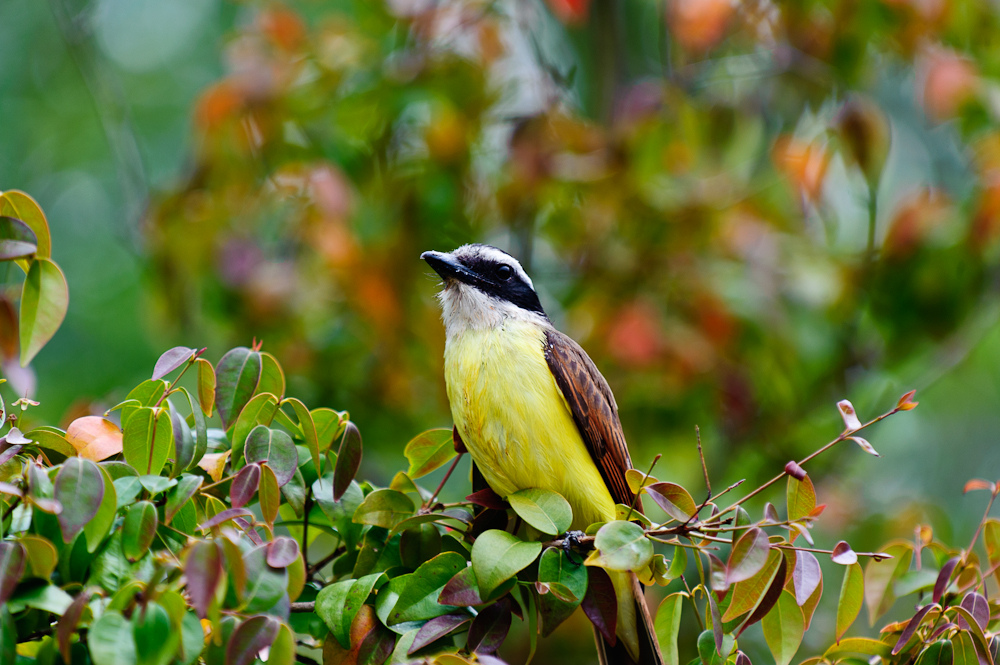Bermuda’s fearsome early reputation as a haunted “Isle of Devils” is blamed on the eerie cry of the nocturnal cahow (Pterodroma cahow), or Bermuda petrel, which populated the island in the 1500s. Sailors heard the plaintive call of the large oceanic birds and believed the island was home to supernatural creatures. Unfortunately, the endemic cahow’s placid nature and lack of agility when not in flight made it so easy to catch that early colonists were able to literally pluck the birds from nests by the thousands, pushing cahows to the brink of extinction within a scant decade of their 1612 settlement.
While the cahow is undoubtedly Bermuda’s most famous avian resident, the island claims 22 breeding bird species (3 of which are seabirds, not year-round residents). Migrants and vagrants bring the tally to 360 species, though only an estimated 132 are commonly seen, according to author Andre Raine in his 2003 publication, A Field Guide to the Birds of Bermuda. Bird-watching enthusiasts will find plenty to marvel over. The gracious long-tail, or white-tailed tropicbird (Phaethon lepturus), is Bermuda’s national bird, featured on the local quarter; it can be seen swooping elegantly from nests in South Shore clifftops throughout the spring and summer.

The tropicbird is Bermuda’s national bird. Photo © BlueOrange Studio/123rf.
The raucous kiskadee, whose yolk-colored chest and bossy behavior makes it perhaps the most noticeable local bird, is entertaining to watch. Pairs of melodic northern cardinals or redbirds (Cardinalis cardinalis) frequent gardens and parks; the male’s crimson plumage with tufty crest is unmistakable, as is its repetitive trilling song (females are smaller and more brown than red, but both have red beaks). Another treat is a shy beauty, the eastern bluebird (Sialia sialia). The only other endemic species is the small greenish-yellow Bermuda white-eyed vireo, whose chirpy song mimics its nickname, “chick-of-the-village.” Common sparrows, barn owls, mourning doves, sandpipers, finches, moorhens, herons, and numerous species of waterfowl can all be frequently spotted. Most originated from the eastern and central United States, as well as the Caribbean.
Spring and fall are the most popular birding seasons. Thousands of migratory species travel north in the spring and south in the fall in these months, either using Bermuda as a convenient stopover or wintering on the island. Migrants can be seen as early as February. The aftermath of storms and hurricanes sometimes finds more exotic species from further afield, having been carried off course by prevailing wind patterns. After the frantic 2005 season, for example, when Hurricane Katrina wreaked havoc on the U.S. Gulf Coast, scores of large frigate birds were suddenly spotted gliding high over the island—a species rarely found in the area.
Sadly, the bluebird—which flashes vivid cornflower as it flits between trees—is becoming something of a rare treat to see. Sightings usually occur near shady lawns or meadow areas of quiet parks such as Devonshire’s Arboretum or Ferry Point National Park in St. George’s. It also feeds and nests around golf courses. Flocks of bluebirds were once common throughout the island, nesting in cedar trees. In recent decades, Bermudians have rallied to protect the declining species (an estimated 500 birds remain), which has fallen prey to domestic and feral cats, has lost vital habitat to development, and has had to compete with the more adaptable sparrow for food and nesting sites. A widespread campaign distributes wooden bluebird nest boxes, with entry holes small enough to deter larger intruders, such as the pushy starling or kiskadee. Bluebird nest boxes can be seen islandwide, in gardens and parks and along trails at hotels and golf courses.

The yellow-chested kiskadee is known to be raucous and bossy. Photo © Craig Stanfill, licensed Creative Commons distribution.
Some of the island’s best bird-watching locales include Spittal Pond Nature Reserve in Smith’s Parish, whose range of habitats attracts diverse species from oceanic birds to waterfowl; Hog Bay Park in Sandys, a large tract of isolated land that includes coastline, wooded hillsides, and agricultural areas; Paget Marsh, with its endemic cedars and palmettos; and the undulating Arboretum. The Bermuda Audubon Society (P.O. Box HM 1328, Hamilton, HM FX, tel. 441/292-1920) leads birding field trips, including sea-watching tours, throughout the year at parks and nature reserves. Check the society’s website for tour details. A Birdwatching Guide to Bermuda (2002), by society president Andrew Dobson, is another good source of information on Bermuda bird species.
Excerpted from the Fourth Edition of Moon Bermuda.